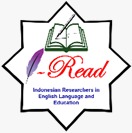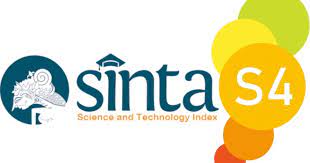Investigating best practices for teaching reading recount text in the context of ESP
DOI:
https://doi.org/10.22219/englie.v5i2.31726Keywords:
Best Practice, ESP Teaching, Reading Recount TextAbstract
This research investigates the implementation of best practices in teaching reading recount texts within the context of Social Care education at a vocational high school. Recognizing the challenges in conventional learning materials for English for Specific Purposes (ESP) students, this research aims to explore how an English teacher's innovative approach to teaching reading recount text in the field of Social Care. A descriptive qualitative design was employed to describe how the teacher implemented the best practice in teaching reading recount text in the Social Care major. Data collection involved observation and interviews with the English teacher responsible for the Social Care major. The study was conducted at SMK Roudhatul Jannah, chosen for its newly introduced Social Care major in the Indonesian vocational education system. The analysis of the data collected revealed that the teacher's best practice involved focusing on biographies of notable figures in Social Care. The manual creation of biographies allowed the teacher to address the specific needs of the students, fostering engagement and practical application of knowledge. The research concludes that the teacher's proactive approach in manually creating biographies of notable figures not only addresses the limitations of conventional learning materials but also demonstrates a commitment to providing relevant content aligned with the student's major. The findings underscore the importance of ESP teachers adopting innovative teaching methods that resonate with students' specific needs, so it can be beneficial for their future careers.
Downloads
References
Alhazmi, A. A., & Kaufmann, A. (2022). Phenomenological qualitative methods applied to the analysis of cross-cultural experience in novel educational social contexts. Frontiers in Psychology, 13, 785134.
Asmin, A. I. (2019). Teachers’ strategies in teaching English at vocational high school. IDEAS: Journal on English Language Teaching and Learning, Linguistics and Literature, 7(2), 261–267. https://doi.org/10.24256/ideas.v7i2.1040
Asrifan, A., Vargheese, K., & Amir, M. (2020). ESP course design: The need analysis on tourism department in Indonesia vocational high schools. Journal of Advanced English Studies, 3(2), 69. https://doi.org/10.47354/jaes.v3i2.85
Candra, B., & Khoiriyah, K. (2024). Cultivating English proficiency for enhanced customer service in Indonesian railways: A study on vocational training needs. English Review: Journal of English Education, 12(1), 397–408. http://doi.org/10.25134/erjee.v12i1.9133
Cresswell, J. W., & Cresswell, J. D. (2018). Research Design: Qualitative, Quantitative, and Mixed Methods Approaches. Los Angeles: SAGE
Daniarti, Y., Taufiq, R., & Sunaryo, B. (2020). The implementation of teaching reading through Genre-based approach for university students. Journal of Physics: Conference Series, 1477(4), 042064. https://doi.org/10.1088/1742-6596/1477/4/042064
Dianti, E. N., Rezeki, Y. S., & Rosnija, E. (2023). Designing supplementary materials entitled “Learning recount texts through local photograph” for reading recount text. Acitya: Journal of Teaching and Education, 5(1), 134–155. https://doi.org/10.30650/ajte.v5i1.3502
Fauzi, I., & Hanifah, D. (2019). Designing reading materials for ESP student’s vocational high school of Medical science. International Journal for Educational and Vocational Studies, 1(4), 314-321. https://doi.org/10.29103/ijevs.v1i4.1439
Fraenkel, J. R., Wallen, N. E., & Hyun, H. H. (2012). How to Design and Evaluate Research in Education. New York: Mc Graw Hill.
Godstime, T. C., & Joseph, A. O. (2016). The relevance of technical and vocational skills acquisition programme in the development and empowerment of rural youths in Niger delta region, Nigeria. Journal of Scientific and Engineering Research, 3(6), 473–478.
Handayani, S., Youlia, L., & Febriani, B. (2020). The use of digital literature in teaching reading narrative text. Journal of English Teaching, Applied Linguistics and Literatures (JETALL), 3(2), 65-74. https://doi.org/10.20527/jetall.v3i2.8445
Husna, A., & Multazim, A. (2019). Students’ difficulties in writing recount text at inclusion classes. LET: Linguistics, Literature, and English Teaching Journal, 9(1). 52-76. https://doi.org/10.18592/let.v9i1.3077
Husni, R., & Wati, L. C. (2021). The effectiveness of thieves strategy towards students’ reading comprehension at the eleventh grade of SMAN 19 Tebo. BASIS (Journal Bahasa Dan Sastra Inggris), 8(2), 319–324. https://doi.org/10.33884/basisupb.v9i1.4459
Iswati, H., & Ridha, D. C. (2023). Snowball throwing technique in teaching recount to help students’ reading comprehension in junior high school. Wiralodra English Journal, 7(2), 99–112. https://doi.org/10.31943/wej.v7i2.233
Kim, H., Sefcik, J. S., & Bradway, C. (2017). Characteristics of qualitative descriptive studies: A systematic review. Research in nursing & health, 40(1), 23-42.
Kondrashova, I. V. (2020). The importance of teaching different types of reading in foreign language to non-linguistic students. International Journal of Humanities and Natural Sciences, 5(3), 25-29. https://doi.org/10.24411/2500-1000-2020-10567
Lesmana, Y., & Resmini, S. (2020). Students response toward the use of scanning technique in reading recount text. Professional Journal of English Education (PROJECT), 3(5), 577-581. https://doi.org/10.22460/project.v3i5.p577-581
Mahbub, M. A. . (2018). English teaching in vocational high school: A need analysis. JEELS (Journal of English Education and Linguistics Studies), 5(2), 229–258. https://doi.org/10.30762/jeels.v5i2.835
Miles, M. B., & Huberman, A. M. (2014). Qualitative Data Analysis, A Methods Sourcebook, Edition 3. USA: Sage Publications.
Mustika, Y. (2020). Improving reading comprehension on recount text by using authentic material. ELTR Journal, 4(2), 140–151. https://doi.org/10.37147/eltr.v4i2.68
Mohammadzadeh, S., Barati, T., & Fatemi, M. A. (2015). An investigation into the English language needs of bank employees of Saderat Bank in Mashhad. Theory and Practice in Language Studies, 5(8), 1695. http://doi.org/10.17507/tpls.0508.21
Noho, H., Fatsah, H., & Talib, R. (2018). Developing supplementary English reading materials for Vocational High School. International Journal of Humanities and Innovation (IJHI), 1(2), 39–45. https://doi.org/10.33750/ijhi.v1i2.12
Oktarina, Y., Inderawati, R., & Petrus, I. (2022). Developing local Culture-Based EFL reading materials for the 21st-Century learning. Studies in English Language and Education, 9(3), 1128–1147. https://doi.org/10.24815/siele.v9i3.24660
Oktariyani, O., Rasyid, Y., Dewanti, R., Im, H., & Semyanov, L. (2023). Need analysis for English reading teaching materials in vocational school based on digital applications. Al-Hijr: Journal of Adulearn World, 1(3), 134–147. https://doi.org/10.55849/alhijr.v1i3.524
Prayitno, E., Sartika, D., & Asmara, R. (2021). An analysis of tenth grade students’ difficulties in comprehending recount text. Journal of English Educational Study (JEES), 4(1), 30–38. https://doi.org/10.31932/jees.v4i1.832
Puspita, F., Sukmaantara, P., & Santihastuti, A. (2016). Developing ESP reading materials by using authentic materials for automotive students at SMKN 2 Jember. Journal of International Seminar and Workshop on ELT.
Rizki Amalia, E. (2018). Developing English textbook material for Islamic primary education program: A participatory action research. ALSUNA: Journal of Arabic and English Language, 1(2), 69-77. http://dx.doi.org/10.31538/alsuna.v1i2.82
Salawazo, I. S., Niman, P., Ndruru, M., & Florentina, R. D. (2020). Analysis of student’s difficulties in writing recount text. Jurnal Pendidikan: Riset dan Konseptual, 4(1), 10-15.
Sari, F., & Atmanegara, Y. (2018). Developing ESP reading materials for Accounting students. Advances in Language and Literary Studies, 9(5), 1-10. https://doi.org/10.7575/aiac.alls.v.9n.5p.1
Sari, N., Mirizon, S., & Inderawati, R. (2021). Developing learning media of recount texts for vocational high school students. English Review: Journal of English Education, 9(2), 263–276. https://doi.org/10.25134/erjee.v9i2.4351
Sarmento, S., & Bocorny, A. E. (2018). English for Specific Purposes (ESP). TESOL Press. https://www.researchgate.net/publication/328964474_English_for_Specific_Purposes_ESP
Showkat, N., Parveen, H., & Parveen NayeemShowkat, H. (2017). Non-Probability and Probability Sampling. https://www.researchgate.net/publication/319066480
Sihombing, P. S. R. (2020). Male and female strategy in reading comprehension of narrative text at SMA Kampus FKIP Universitas HKBP Nommensen Pematangsiantar. International Journal of English Literature and Social Sciences, 5(1), 103–106. https://doi.org/10.22161/ijels.51.21
Suriani, & Yeni, M. (2023). Retelling as a strategy in enhancing students’ reading comprehension of recount text: A classroom Action Research. Jurnal Edukasi (JUDEK), 11(2), 156-165. https://ejournal-fkip.unisi.ac.id/judek
Suryaningrat, S., & Syahrial, E. (2021). An analysis on the English teacher’s strategies in teaching reading comprehension at the second-grade students of junior high school 12 of Mataram. Jurnal Ilmiah Pendidikan Indonesia, 3(1), 77–83. https://jipi.unram.ac.id/index.php/jipi/article/view/132
Theriana, A. (2020). The application of creative problem-solving method in teaching reading recount texts to the Tenth grade students of senior high school 2 Palembang. Holistics Journal, 12(2), 51-61.
Usman, R. K., & Baihaqi, A. (2020). The use of Microsoft Sway 365 in teaching reading descriptive text: A response to pandemic situation. Journal of English Language Teaching and Cultural Studies (JELTS), 3(2). 82-88. https://doi.org/10.48181/jelts.v3i2.9999
Vernandes Uzer, Y. (2020). Teaching reading recount texts through Tri Focus Steve Snyder technique. Holistics Journal, 12(2), 41-50.
Virdaus, V. V., & Rifa’i, S. (2021). The fluency of oral reading with natural reader software. Journal of Development Research, 5(2), 156–163. https://doi.org/10.28926/jdr.v5i2.190
Yulianti, E., & Setiawan, E. (2019). Improving students’ reading comprehension through reciprocal teaching strategy on report text. PROJECT (Professional Journal of English Education), 2(5), 601-607. http://dx.doi.org/10.22460/project.v2i5.p601-607
Zahro, T. M., & Rachmawati, E. (2021). The use of semantic mapping technique in teaching reading recount text (A case study at the eighth grade of junior high school in Majenang). Journal of English Education Program (JEEP), 8(2), 8-14. https://jurnal.unigal.ac.id/index.php/jeep
Downloads
Published
How to Cite
Issue
Section
License
Copyright (c) 2024 Sandhi Fattahul Rohman, Sri Hartiningsih, Rosalin Ismayoeng Gusdian

This work is licensed under a Creative Commons Attribution-ShareAlike 4.0 International License.
Authors who publish with English Learning Innovation (englie) agree to the following terms:
- For all articles published in English Learning Innovation (englie), copyright is retained by the authors. Authors give permission to the publisher to announce the work with conditions. When the manuscript is accepted for publication, the authors agree to automatic transfer of the publishing right to the publisher.
- Authors retain copyright and grant the journal right of first publication with the work simultaneously licensed under a Creative Commons Attribution-ShareAlike 4.0 International License that allows others to share the work with an acknowledgement of the work's authorship and initial publication in this journal.
- Authors are able to enter into separate, additional contractual arrangements for the non-exclusive distribution of the journal's published version of the work (e.g., post it to an institutional repository or publish it in a book), with an acknowledgment of its initial publication in this journal.
- Authors are permitted and encouraged to post their work online (e.g., in institutional repositories or on their website) prior to and during the submission process, as it can lead to productive exchanges, as well as earlier and greater citation of published work (See The Effect of Open Access).
This work is licensed under a Creative Commons Attribution-ShareAlike 4.0 International License.
















1.png)












